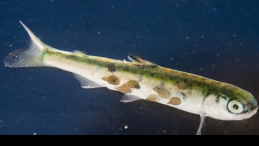LIVING OCEANS CALLS ON ASC TO SUSPEND FARMS ENDANGERING WILD SALMON
Lethal Lice Levels found on Clayoquot Wild Juvenile Salmon
Vancouver: Living Oceans issued a statement today calling on the Aquaculture Stewardship Council to ensure that surveillance audits are conducted on all of the B.C. salmon farms that have been certified under their varied or ‘relaxed’ criterion for sea lice levels; and to suspend any farms that have failed to keep lice levels under control.
The group contends that none of the B.C. open netpen salmon farms could have achieved certification without the benefit of relaxed conditions for sea lice levels. Even so, they say, lice management on many farms is so poor that lice levels have been soaring during the time when juvenile salmon are leaving their native rivers—precisely the impact that the certification conditions were designed to avoid.
Living Oceans Society, posted the following statement to its website today:
Living Oceans welcomes the news that Cermaq Canada, after discussion with the ASC, has decided voluntarily to halt the use of the ASC eco-logo on salmon raised at their certified Clayoquot farms that are experiencing high sea lice levels. We appreciate ASC’s prompt investigation into the matter.
Living Oceans acknowledges ASC’s intention to conduct an operational review of sea lice limits. As stakeholders, we intend to provide input, as we did during the Salmon Aquaculture Dialogue that gave rise to the original certification standards.
However, in the meantime, Living Oceans finds it deeply concerning that ASC continues to allow auditors to apply its variances of the sea lice indicator to all B.C. farms, regardless of their actual record on sea lice control. At least 15 B.C. farms have exceeded the 3 lice per fish regulatory trigger during the sensitive period for out-migrating wild salmon at some point since their certification or whilst in assessment for ASC certification. Public reporting shows counts ranged from 3 to 34.4 lice per fish for these ASC farms.
Independent monitoring of juvenile wild salmonids during sea lice outbreaks has disclosed lice loads as high as 20 per juvenile (Clayoquot Sound, 2018). The latest report from scientists at the Salmon Coast Field Station concludes that ineffective management on salmon farms is “clearly a factor affecting outbreaks on wild salmon” and contributed to high lice loads in the Broughton Archipelago for the last 3 years (2015-2017; 2018 monitoring has yet to be completed). Lice loads this high lead to the death of affected fish; population dynamics modelling has indicated the potential, particularly in Broughton area pink salmon, for population-level impacts from lice infestation.
While a sea lice review and consequent update to the Salmon Standard may eventually address our concerns regarding the inadequacies of the sea lice variances, these will take substantial time to conduct and ratify. In the meantime, for the fourth consecutive year, ASC-certified farms are placing juvenile salmon at risk.
Therefore, Living Oceans states that the continued credibility of the ASC scheme requires that all B.C. farms certified with the benefit of the sea lice variances should be immediately investigated by auditors to verify lice levels. Those farms with a record of exceeding the management threshold of 3 lice per fish during the wild salmon out-migration period should have their certifications suspended, pending the resolution of the sea lice standard review. The ASC should provide immediate guidance to auditors that the variance cannot be used to certify farms sharing water bodies with farms that have been unable to maintain lice levels at or below 3 per fish during outmigration.
-30-
Contactez-nous
Karen Wristen, Living Oceans Society 604-788-5634
Kelly Roebuck, Living Oceans Society kroebuck [at] livingoceans.org

